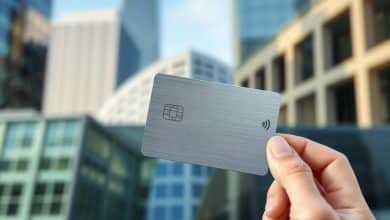Steps to Make the Most of Credit Card Reward Programs
Credit card reward programs offer a great chance for smart shoppers to get benefits from everyday purchases. To get the most out of these rewards, it’s important to plan carefully based on how you spend money. This guide will show you key steps and smart ways to boost your credit card rewards, especially for those in South Africa.
By learning about different reward systems, you can use your spending to your advantage. This way, you can enjoy the benefits that come with using your credit cards.
Understanding Credit Card Rewards
Credit card rewards can give big benefits if used smartly. They often come as cash back, points, or travel miles. Cardholders earn these based on their spending. It’s key to know how to get the most out of them.
Managing rewards well means knowing a few tips. It’s important to understand the different types of rewards. This helps pick the best card for your spending habits.
Interest rates on rewards cards can be high, from 15% to 20% or more. Knowing these rates is crucial, especially if you carry a balance. High-end cards often have big annual fees, which might make you think twice.
Good credit is usually needed to get rewards cards, around 670 or higher. Rewards programs have spending limits, especially for things like groceries. This means you need to plan your spending to get the most benefits.
Understanding credit card rewards helps make better choices. By knowing what’s out there, you can pick the right card. This way, you can earn more rewards.
Types of Credit Card Rewards
Knowing about different credit card rewards can really help your money strategy. There are mainly three types: cash back, points, and travel rewards. Each one fits different spending habits and lifestyles, so it’s key to find the right one for you.
Cash Back Rewards
Cash back rewards are simple. You get a percentage of your spending back in cash. This cash is yours to use however you like. Cash back cards offer 1% to 5% back on things like groceries or gas.
Some cards have fixed categories for cash back, while others change. For example, the Blue Cash Preferred Card from American Express gives 6% cash back on groceries up to $6,000 a year. It also offers 3% back on gas. This makes cash back cards great for everyday spending.
Points Rewards
Points rewards offer more flexibility. You can earn points on all eligible purchases and use them for many things like merchandise or travel. Points cards give more redemption options than cash back cards, which is good for those who like variety.
Credit cards that earn points or miles are especially good for frequent travelers. They offer more points on travel purchases, helping you save on trips.
Travel Rewards
Travel rewards cards are perfect for those who love to travel. They often partner with airlines and hotels, letting you earn miles or points for flights and hotel stays. For example, the Delta SkyMiles Gold American Express Card gives 2X miles at restaurants worldwide.
Travel rewards cards are ideal for regular travelers. They help you get the most out of your travel spending.
Choosing the Right Credit Card for Your Spending
Choosing the right credit card is key to getting the most out of rewards. First, look at how you spend money. Do you buy groceries, eat out, travel, or fill up on gas? Knowing this helps pick the best card for you.
Think about the annual fees too. Some cards cost less than $100, while others are pricier. Make sure the rewards are worth the fee. If your credit score is 670 or higher, you might get a card with rewards and a higher APR. But, if your score is lower, you could face higher interest rates.
Some cards offer 0% APR for a while. This is great for those with irregular income or unexpected bills. Knowing about late fees and balance transfers can also save you money and boost rewards.
To get the most from your cards, pay on time. This builds your credit and increases rewards. Choose cards wisely to improve your financial health.
Steps to Make the Most of Credit Card Reward Programs
To get the most from credit card rewards, use your cards for daily buys. This way, you earn points or cash back on many purchases. For example, some cards give 6 percent cash back at U.S. supermarkets for the first $6,000 spent each year. After that, rewards fall to 1 percent.
Planning your grocery shopping can help you earn a lot of rewards. Another smart move is to use cards like the Wells Fargo Active Cash® Card. It offers unlimited 2 percent cash rewards on all purchases.
Keep an eye on special bonus categories, like those from Chase and Discover. These can give you 5 percent cash back during certain times.
Remember to set reminders for when payments are due. Paying off your balance in full each month saves you from interest. This also helps you make the most of your rewards.
Don’t forget about sign-up bonuses, which can be worth $250 to $500. To get these, you need to meet certain spending or earning conditions.
Lastly, look into extra card perks like travel benefits or special APRs. For example, the Chase Sapphire Preferred® Card boosts travel points by 25 percent when booked through their site. Using these strategies can increase your rewards and save you money.
Paying Off Your Credit Card Balance
Managing your credit card balance well is key to getting the most from rewards programs. Paying off your balance every month helps avoid high interest charges. This way, you keep your rewards’ value high and stay financially healthy.
Importance of Paying in Full
It’s vital to pay your credit card balance in full each month. This step helps you dodge interest rates that can be as high as 20%. If you don’t, your rewards can turn into lost money, reducing your financial gains.
By paying off your balance regularly, you also build a good credit history. This makes it easier to get better terms on future credit options.
Avoiding Interest Charges
Interest charges can quickly eat into your rewards. To avoid this, manage your credit card balances carefully. It’s crucial to make payments on time and in full.
Missing payments can lead to higher interest rates and penalties. This hurts your credit score. So, making timely payments is key to getting the most from your credit card without extra fees.
Making Everyday Purchases Work for You
Everyday purchases are a great way to earn reward points. Whether it’s grocery shopping, filling up your gas tank, or eating out, these activities can help you earn rewards. Using a rewards credit card for these purchases makes it easy to collect points or cash back.
Credit cards like the Blue Cash Preferred® Card from American Express offer great benefits. For example, you get 6% cash back on U.S. supermarket purchases and streaming services. The Chase Sapphire Preferred® Card gives 5X points on travel booked through Chase Travel. These cards make shopping more rewarding.
Credit card points are usually worth one cent each, but their value can change. Some programs let you transfer points to airlines or hotels, increasing their worth. Cash back credit cards also offer clear rewards based on your spending. This makes it simple to see how much you’re saving or earning.
Linking credit cards to loyalty programs can boost your rewards even more. Some cards give extra points for gas or dining purchases. By choosing the right credit card for your spending, you can get the most rewards on everyday expenses.
Utilizing Sign-Up Bonuses
Credit cards often lure new users with attractive sign-up bonuses. These bonuses can greatly boost a card’s value if used wisely. It’s key for those considering a card to see bonuses as part of their financial strategy.
Maximizing Introductory Offers
Many credit cards offer big introductory deals. These deals usually ask you to spend a certain amount within a time frame. For example, some travel and cash-back cards offer $200 cash back or 60,000 points for the Chase Sapphire Reserve® after spending $4,000 in three months.
Knowing how to make the most of these offers can lead to big rewards.
Evaluating Bonus Requirements
The rules to get sign-up bonuses vary a lot. Some cards need you to spend as little as $500, while others ask for up to $5,000. It’s important to meet these targets without spending too much.
Choose cards that fit your spending habits to qualify for bonuses and stay financially sound.
With the economy changing, it’s important to know about stricter approval rules and limits like Chase’s 5/24 rule. Using credit cards wisely can earn you rewards without debt.
Taking Advantage of Additional Card Perks
Credit card users often miss out on extra benefits beyond rewards. Many cards offer travel insurance, extended warranties, purchase protection, and discounts. By using these perks, cardholders can make the most of their spending.
For example, a card with travel insurance can save you money and worry. It ensures you’re covered during unexpected travel events. Extended warranties and purchase protection also offer peace of mind, letting you shop with confidence.
Today, credit cards are designed to fit your spending habits. Brands use your transaction data to offer perks that match your lifestyle. Using these benefits well can turn card use into a rewarding experience, making it worth the search for more.
FAQ
What are credit card rewards?
How can I maximize my credit card rewards?
What are the different types of credit card rewards?
How do I choose the right credit card for my spending habits?
What should I do if I have multiple credit cards?
What are sign-up bonuses, and how can I benefit from them?
What additional perks should I look for in a credit card?
Is it necessary to pay off the credit card balance in full?
Published on: 23 de August de 2024

Bakari Romano
Bakari Romano is a finance and investment expert with a strong background in administration. As a dedicated professional, Bakari is passionate about sharing his knowledge to empower individuals in managing their finances effectively. Driven by this mission, he founded FinancasPro.com, where he provides insightful and practical advice to help people make informed financial decisions. Through his work on the site, Bakari continues to make finance accessible and understandable, bridging the gap between expert knowledge and everyday financial needs.






